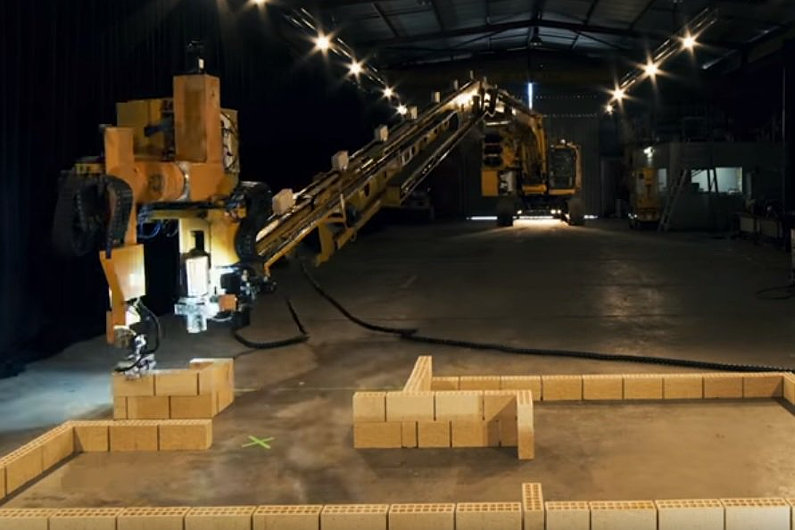How we plan, build and maintain structures within the construction industry is transforming — thanks much to artificial intelligence (AI). AI is where machines exhibit their own intelligence through using algorithms to solve problems using inputted data.
By harnessing robotics, construction managers can utilise intelligent machines that can perform routine tasks that were once completed by humans, such as bricklaying. Alternatively, AI systems can collate and organise information for engineers to use within project planning and design implementation.

So, how is the construction industry starting to use AI to complete projects that contain fewer errors, less omissions, safer working practices, improved workflows and more on-time worksite completions?
The four categories of artificial intelligence
Everything from building design software to admin processes is currently changing within the sector. Here are the four, main sections regarding the use of AI and robotics:
1. Preparation with equipment
Planning a project is a huge part of the process — and it’s something that AI is becoming a more needed part of today. Autonomous equipment is considered AI as it is aware of its surroundings and is capable of navigation without human input. In the planning stages, AI machinery can survey a proposed construction site and gather enough information to create 3D maps, blueprints and construction plans.
AI can complete these tasks in a day, while provisory, it could have taken weeks. This helps to save firms both time and money.
2. Office jobs
Management and overseeing procedures are other key roles that AI can adopt. For example, workers can input sick days, vacancies and sudden departures into a data system and an AI machine will adapt the project accordingly. The AI will understand that the task must be moved to another employee and will do so on its own accord.
3. Building methodology
In 2018, AI databases can tell engineers how to physically build a project. For example, if engineers were working on a proposed new bridge, AI systems would be able to advise and present a case for how the bridge should be constructed. This is based on past projects over the last 50 years, as well as verifying pre-existing blueprints for the design and implementation stages of the project. By having this information to hand, engineers can make crucial decisions based on evidence that they may not have previously had at their disposal.
Autonomous site machinery is also picking up pace. This lets the driver to be outside of the vehicle when it is operating at dangerous heights. Using sensors and GPS, the vehicle can calculate the safest route.
4. After construction
It’s not only the exterior of the building or its construction that AI can assist with. In the US alone, $1.5 billion was invested in 2016 by companies looking to capitalise on the growing market of using AI inside a building.
For example, the hotel chain Wynn announced in 2016 that every room in its Las Vegas hotel would have an Amazon Echo feature by the end of 2017. These devices can be used for aspects of the room such as lighting, temperature and any audio-visual equipment contained. These can also be used in domestic settings. To elaborate, homeowners can control aspects of their house through voice commands from a single device.
Building informa tion modelling and assessment
tion modelling and assessment
Retaining details about the building process of a construction is essential. Building information modelling (BIM) can be used so that a building’s history — including its construction, management decisions, construction, and demolition — are all recorded.
Virtual assistants (VAs) are also a handy addition to the construction process. By combining VAs alongside near-field communication (NFC), VAs can be given additional information to the building itself in real-time from various sensors in the building. For example, if there were structural problems with a building, then VAs could inform engineers specifically where the problem was and how it can be fixed.
VAs and AIs can reduce the money and time that traditional labour uses. AIs can also help to replace redundant labour to allow for the industry to make efficiency savings that weren’t possible before this type of technology existed. As the future of AI becomes a reality within construction, only time will tell how reliable intelligent machines we will have to be in order to construct innovative buildings.

